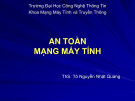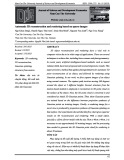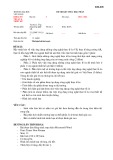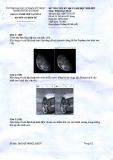Giới thiệu tài liệu
Bài báo "Phân tích sự thay đổi về tảng rừng của Việt Nam: Dữ liệu, phương pháp và kết quả" cung cấp một tài liệu khoa học về sự thay đổi về tảng rừng của Việt Nam trong những năm gần đây. Bài báo chỉnh lý các dữ liệu và công cụ để phân tích sự thay đổi, đánh giá kết quả và thảo luận về các yếu tố gây ra sự thay đổi. Bài báo chia thành nhiều phần, bao gồm giới thiệu, khảo sát dữ liệu, phân tích sự thay đổi, quyết định yếu tố gây ra sự thay đổi và hình ảnh sự thay đổi.
Đối tượng sử dụng
Nhà nghiên cứu và sinh viên khoa học máy tính
Nội dung tóm tắt
Bài báo "Phân tích sự thay đổi về tảng rừng của Việt Nam: Dữ liệu, phương pháp và kết quả" là một tài liệu hữu ích cho nhà nghiên cứu và sinh viên khoa học máy tính. Bài báo chỉnh lý các dữ liệu, phương pháp và công cụ để phân tích sự thay đổi về tảng rừng của Việt Nam trong những năm gần đây. Bài báo chia thành nhiều phần, bao gồm giới thiệu, khảo sát dữ liệu, phân tích sự thay đổi, quyết định yếu tố gây ra sự thay đổi và hình ảnh sự thay đổi. Trong khảo sát dữ liệu, bài báo sử dụng các công cụ như rào quan sát trời, mạng lưới quan sát tảng rừng và các dữ liệu đã thu thập. Phân tích sự thay đổi chủ yếu mô tả các biểu đồ và số liệu về sự thay đổi của tảng rừng trong những năm gần đây. Trong phần quyết định yếu tố gây ra sự thay đổi, bài báo thảo luận về các yếu tố liên quan sức ép không khí, hoạt động con người và hoạt động công nghiệp. Hình ảnh sự thay đổi cho thấy sự thay đổi của tảng rừng quan trọng trong những năm gần đây và cần phải xử lý.































